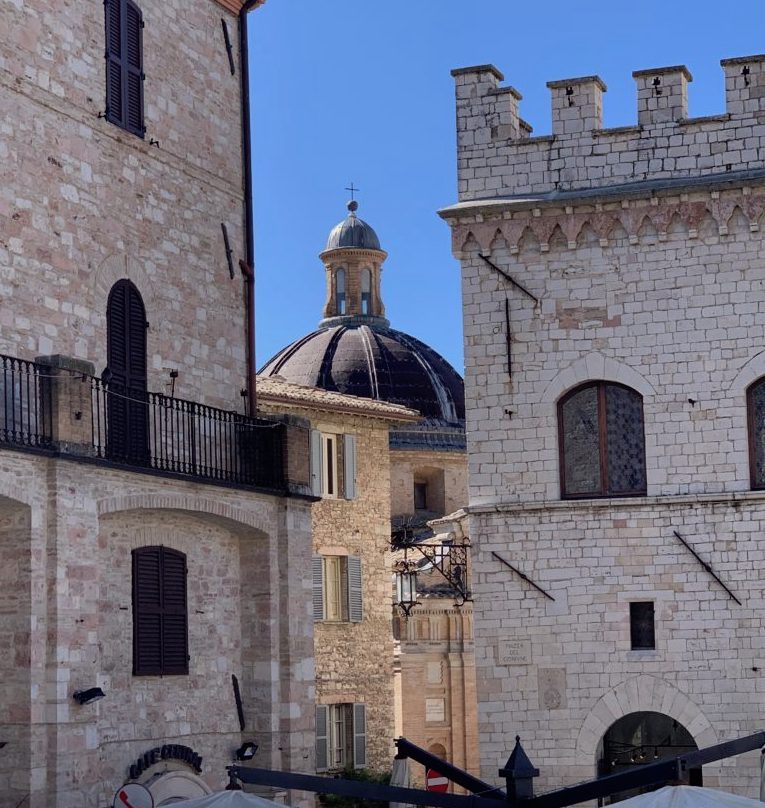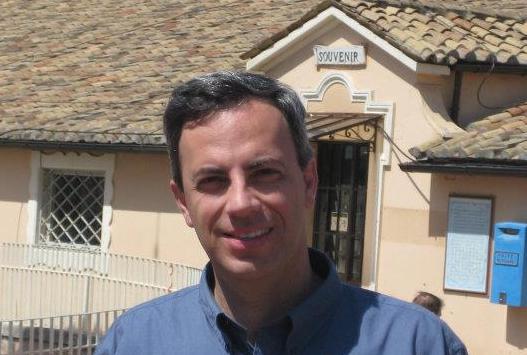
Assisi is one of the most famous and beautiful cities in Italy. Assisi is a hill town in central Italy’s Umbria region. It was the birthplace of St. Francis (1181–1226), one of Italy’s patron saints.

The Basilica of St. Francis is a massive, 2-level church, consecrated in 1253. Its 13th-century frescoes portraying the life of St. Francis have been attributed to Giotto and Cimabue, among others. The crypt houses the saint’s stone sarcophagus.

It was also the birthplace St. Clare (Chiara d’Offreducci), the founder of the Poor Sisters, which later became the Order of Poor Clares after her death.

It is also generally regarded as the birthplace of the Latin poet Propertius, born around 50–45 BC.

History
Around 1000 BC a wave of immigrants settled in the upper Tiber valley in the neighborhood of Assisi. These were the Umbrians, living in small fortified settlements on high ground. From 450 BC these settlements were gradually taken over by the Etruscans. Later the Romans took control of central Italy and they built the flourishing municipium Asisium on a series of terraces on Monte Subasio.

Roman remains can still be found in Assisi: city walls, the forum (now Piazza del Comune), a theatre, an amphitheatre and the Temple of Minerva (now transformed into the Church of Santa Maria sopra Minerva).

In 1997, the remains of a Roman villa were also discovered containing several well-preserved rooms with frescoes and mosaics in a condition rarely found outside sites such as Pompei.

In 238 AD Assisi was converted to Christianity by bishop Rufino. According to tradition, his remains rest in the Cathedral Church of San Rufino in Assisi.

The Ostrogoths destroyed most of the town in 545. Assisi then came under the rule of the Lombards as part of the Lombard and then Frankish Duchy of Spoleto.

The thriving comune became an independent Ghibelline comune in the 11th century. Constantly struggling with the Guelph Perugia, it was during one of those battles, the battle at Ponte San Giovanni, that Francesco di Bernardone (Saint Francis of Assisi) was taken prisoner, setting in motion the events that eventually led him to live as a beggar, renounce the world and establish the Order of Friars Minor.

The city, which had remained within the confines of the Roman walls, began to expand outside these walls in the 13th century. In this period the city was under papal jurisdiction.

In the beginning Assisi fell under the rule of Perugia and later under several despots. The city went into a deep decline through the plague of the Black Death in 1348.
The city came again under papal jurisdiction under the rule of Pope Pius II (1458–1464).

In 1569 construction was started of the Basilica of Santa Maria degli Angeli. During the Renaissance and in later centuries, the city continued to develop peacefully, as the 17th-century palazzi of the Bernabei and Giacobetti attest.

Now the site of many a pilgrimage, Assisi is linked in legend with its native son, St. Francis. The gentle saint founded the Franciscan order and shares honors with St. Catherine of Siena as the patron saint of Italy. He is remembered by many, even non-Christians, as a lover of nature (his preaching to an audience of birds is one of the legends of his life).

Assisi was hit by two devastating earthquakes, that shook Umbria in September 1997. But the recovery and restoration have been remarkable, although much remains to be done. Massive damage was caused to many historical sites, but the major attraction, the Basilica di San Francesco, reopened less than 2 years later.

UNESCO collectively designated the Franciscan structures of Assisi as a World Heritage Site in 2000.


Churches in Assisi
- The Basilica of San Francesco d’Assisi
- Santa Maria Maggiore (St. Mary the Greater), the earliest extant church in Assisi.
- The Cathedral of San Rufino (St. Rufinus)
- Basilica of Santa Chiara
- Basilica of Santa Maria degli Angeli (St. Mary of the Angels), which houses the Porziuncola.
- Chiesa Nuova, built over the presumed parental home of St. Francis
- Santo Stefano, one of the oldest churches of Assisi.
- Eremo delle Carceri, a small monastery with church at a canyon above the town, where St. Francis retreated and preached to birds
- Church of San Pietro (St. Peter), built by the Benedictines in the 10th century and rebuilt in the 13th century.







